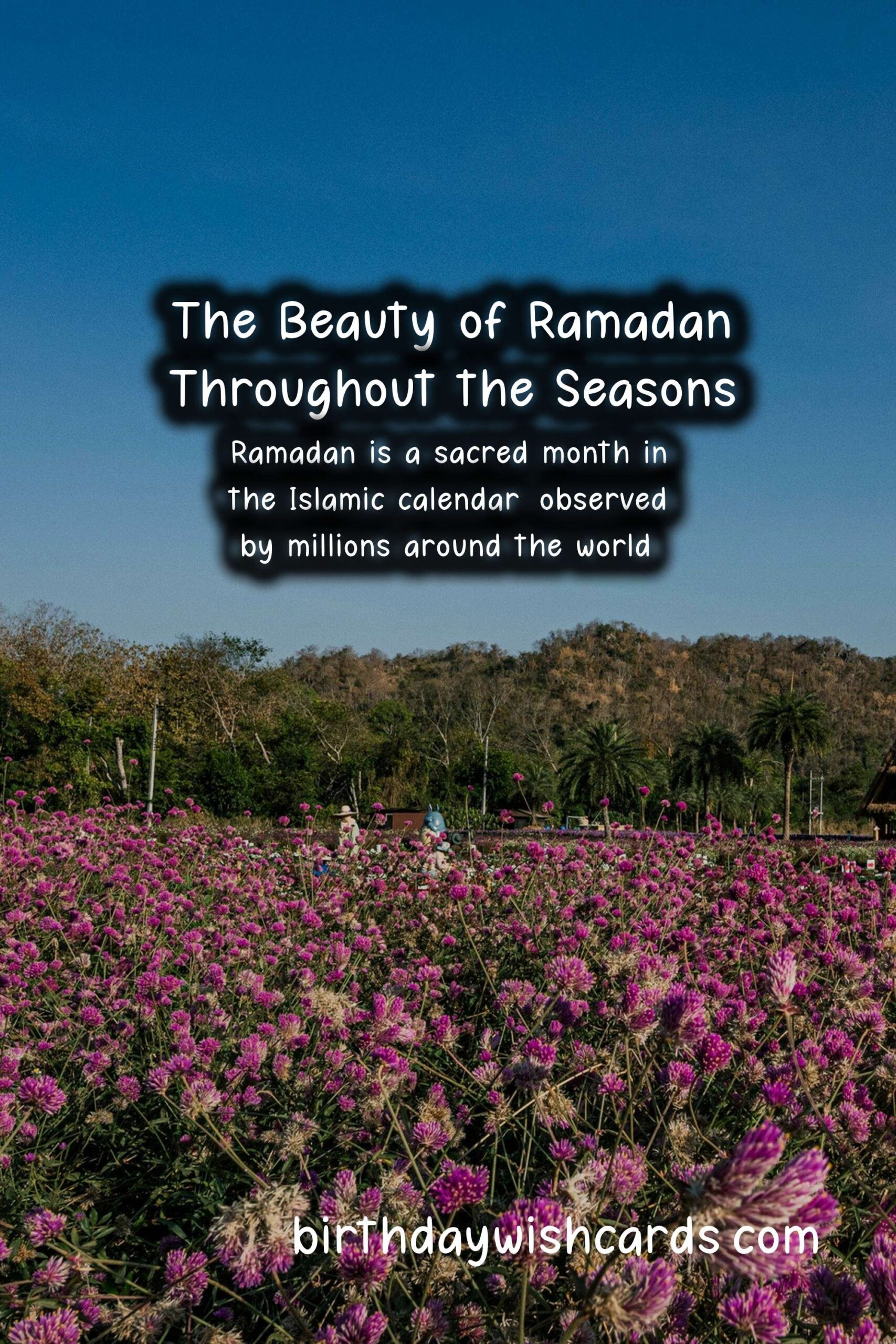What Makes Ramadan Unique in Each Season
What Makes Ramadan Unique in Each Season
Ramadan is a sacred month in the Islamic calendar, observed by millions around the world. Each year, Ramadan shifts through different seasons due to the lunar calendar, creating unique experiences for its observance. This article explores the distinct characteristics of Ramadan in various seasons.
Ramadan in Spring
Spring is a beautiful season, marked by blooming flowers and mild weather. Ramadan during this season can be particularly refreshing. The longer daylight hours and pleasant temperatures allow for enjoyable iftars, the meals that break the fast at sunset.
In spring, the essence of renewal resonates with the spirit of Ramadan, encouraging spiritual growth and introspection. This season also offers the advantage of access to fresh fruits and vegetables, enriching the iftar tables with colorful and nutritious options.
Ramadan in Summer
Summer presents a different set of challenges for those observing Ramadan. Longer days mean extended fasting hours, which can be physically demanding. However, the community aspect of Ramadan shines during this season.
Evening activities become lively as families gather for iftar. Barbecues and outdoor dining become commonplace, adding a festive atmosphere. The warm nights are ideal for tarawih prayers, where the Quran is recited in congregation, further enhancing the sense of community.
Ramadan in Autumn
As Ramadan falls in autumn, it signifies a period of harvest. This seasonal association enriches the cultural and culinary experiences of the month. Traditional dishes take center stage at iftar gatherings, highlighting seasonal produce.
The cooler temperatures provide a comforting backdrop for spiritual reflection. Autumn evenings, often cooler and crisp, offer a perfect setting for community prayers and gatherings, fostering a sense of togetherness.
Ramadan in Winter
Winter brings a profound sense of tranquility during Ramadan. The shorter days result in less fasting time, allowing for a different pacing of the month’s spiritual practices. The chilly evenings encourage warm gatherings, where families and friends come together to share meals.
Additionally, winter nights often bring a sense of calm. The serene environment is conducive to prayer and reflection, allowing individuals to immerse themselves deeply in their faith. Hot soups and stews dominate the iftar menus, providing warmth and comfort during the cold evenings.
Conclusion
No matter the season, Ramadan remains a transformative period characterized by self-discipline, community, and spirituality. Each season offers unique experiences and flavors, enriching the observance of this holy month. As Ramadan continues its cycle through the seasons, it invites individuals to embrace the changes and cherish the timeless traditions of love, compassion, and gratitude.
Ramadan is a sacred month in the Islamic calendar, observed by millions around the world.
Each year, Ramadan shifts through different seasons due to the lunar calendar.










#Ramadan #IslamicTraditions






